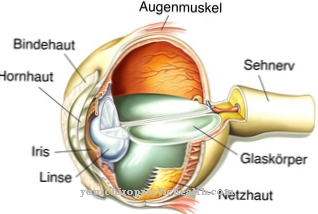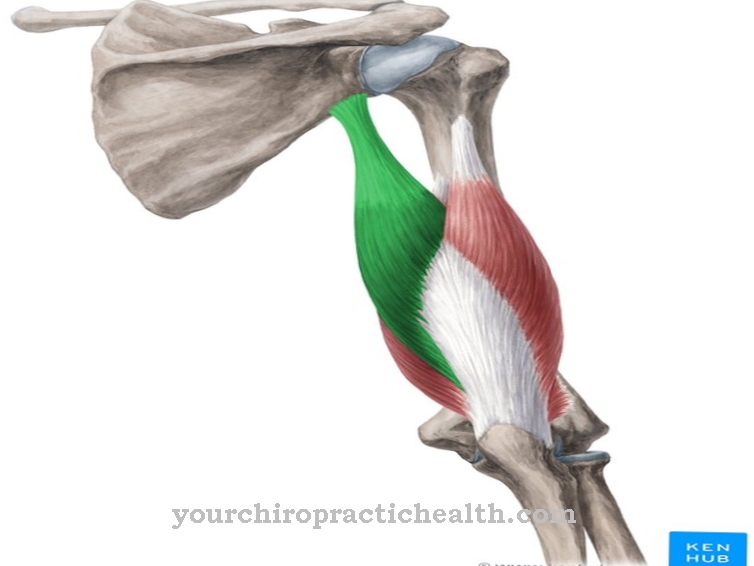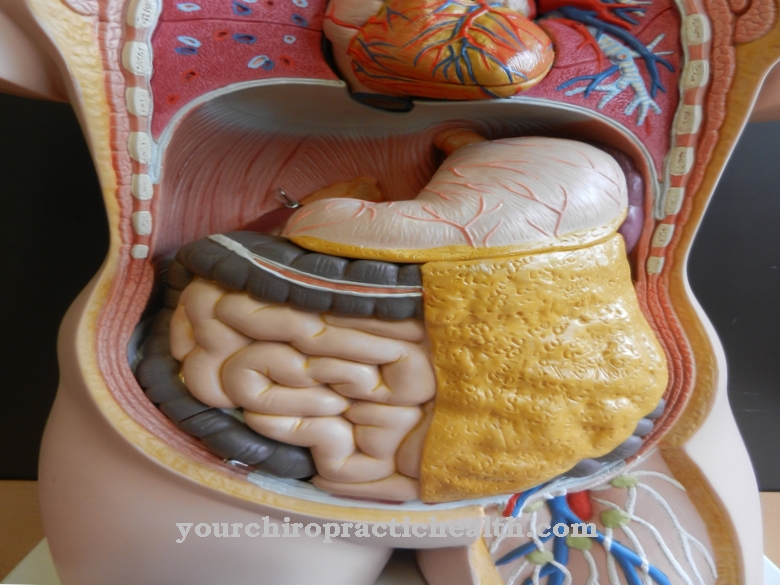Of the Supraclavicular nerve sits in the neck plexus and corresponds to several sensitive nerve branches. The nerve innervates different parts of the skin in the neck, chest and shoulder region. A failure of the supraclavicular nerves leads to sensory disorders.
What is the supraclavicular nerve?
The neck plexus is also known as the cervical plexus. This is a network of nerves from the anterior rami of the spinal nerves in segments C1 to C4. The individual nerve rami of the cervical plexus penetrate between the anterior scalenus muscle and the medius scalenus muscle down into the deeper neck region.
The plexus motor innervates the ventral neck muscles. The same is true for the infrahyric muscles of the lower hyoid bone and for the diaphragm. Sensitive branches also articulate in the cervical plexus. They innervate the ear, neck, skin on the collarbone and shoulder. The supraclavicular nerves form part of the sensory nerves that meet in the cervical plexus. They are also known as subclavian nerves and correspond to a multi-limbed group of sensitive nerve branches with the origin of the cervical plexus.
The root cells of the nerve group are located within the spinal ganglia of the third and fourth neck segments in the spinal cord, i.e. in C3 and C4. The individual nerve branches are divided into Nervi supraclaviculares anteriores, intermedii and posteriores, i.e. into anterior, middle and posterior subclavian nerves. Together they control the sensitivity of the upper collarbone area, i.e. the skin in the upper chest and shoulder area as well as the lower neck region.
Anatomy & structure
The supraclavicular nerves start from the anterior branches of the second and third spinal nerves. After being isolated from the cervical plexus, the supraclavicular nerves pierce the neck muscles at the so-called Erb's point, from where they descend into the subcutaneous tissue along the neck.
The anterior supraclavicular nerves cross via the external jugular vein and the sternocleidomastoid muscle. The nervi supraclaviculares intermedii cross over the collarbone and the nervi supraclaviculares posteriores run diagonally over the trapezius muscle and bone corner on the shoulder blade. At Erb's point, all the supraclavicular nerves meet the minor occipitalis nerve, transversus colli nerve and auricularis nerve Magnus. Near the collarbone, the nerves become branches of the skin, as they pierce the platysma in addition to the superficial neck fascia.
The nerves are afferent nerves in relation to their direction of conduction. This means that they lead to the central nervous system. Unlike motor nerves, which always contain parts of sensory nerves, sensitive nerves such as the supraclavicular nerve are to be understood as purely sensitive. So they do not contain any motor fibers. A layer of myelin around the nerves acts as insulation.
Function & tasks
The supraclavicular nerve, or rather the supraclavicular nerve, are sensory nerves that are connected to receptors. Such receptors are sensory cells that register temperature, pain and contact stimuli such as pressure.
Incoming stimuli are converted into bioelectrical excitation by the receptors depending on the respective stimulus intensity and thus transferred into the language of the central nervous system. Afferent sensitive nerves ensure that the stimuli from the receptors arrive as action potentials in the central nervous system, where they can be processed further and transferred to consciousness. The nervi supraclaviculares anteriores connect the skin in the anterior and lower neck region as well as the upper chest region up to the midline with the central nervous system. They conduct all temperature, pain and touch stimuli from this region via the spinal cord into the brain.
The nervi supraclaviculares intermedii or nervi supraclaviculares medii communicate with the sensitive skin branches of intercostal nerves and pass on temperature, pain and contact stimuli from the skin above the deltoid and large pectoral muscles. The nervi supraclaviculares laterales or nervi supraclaviculares posteriores transmit the same stimuli from the skin in the upper shoulder area to the spinal cord and brain. The nerves together are responsible for the sensitivity of different skin regions in the neck, shoulder and chest area. The nerves are protected against loss of excitation by their myelin layer like a plastic-coated cable.
Diseases
Damage to the supraclavicular nerve causes disorders of sensitivity in the aforementioned skin regions. If the nerve fails completely, total numbness can occur. In this case, the numbness is often associated with a foreign body feeling. If the functional disorders of the sensitive nerves are only limited, tingling feelings usually occur.
In some cases, only the distinction between cold and hot stimuli on the skin is disturbed. An isolated pain sensation disorder is also conceivable, but relatively rare. In most cases, partial nerve failure is related to nerve compression. In this context, an isolated interruption of the described pathways in the cervical plexus rarely occurs.
The entire plexus is more often jammed, especially in anatomical bottlenecks between the external jugular vein and the sternocleidomastoid muscle. This type of nerve compression syndrome can be caused by accidents. Hyperplasia and an associated increase in the size of the sternocleidomastoid muscle due to excessive loads can also cause the compression. In rare cases, a sensory disorder due to conduction disorder of the supraclavicular nerves is also due to a tumor. Nerve inflammation is far more common.
Often it is peripheral inflammation of the nerves, in which the myelin breaks down around the nerves and thus promotes loss of excitation in the affected line. Peripheral demyelination often occurs as a result of malnutrition, poisoning, infection or after trauma. If inflammation in the associated segment of the spinal cord causes the supraclavicular nerves to fail, it is usually either bacterial or autoimmunological.


.jpg)




















.jpg)



